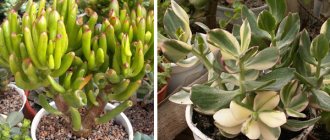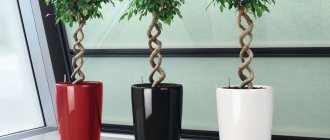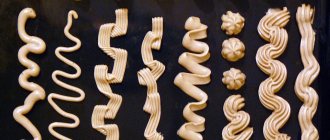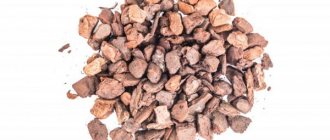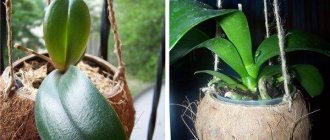Japanese culture is expressed in improving and changing the world around it. Pine bonsai is the result of human creation, expressed in the art of growing miniature trees. The practice of bonsai first appeared in China over a thousand years ago. Then this method came to Japan, where it was widely developed and spread throughout the world. Graceful trees grown using the bonsai method are exact copies of real trees grown in nature. Unpretentious and evergreen pine is ideal for creating bonsai. Bonsai-style trees came to Russian gardens already in the 20th century. Gardeners enjoy forming pine bonsai, giving it original and unique shapes. Read about the height of sequoia.
What is the art of bonsai
In Japan, the art of bonsai carries a sacred meaning. Represented by growing long-lived rocks in a small pot, on a tray or a piece of rock. Modern landscape design also involves the creation of an unusual garden on the site. Growing a bonsai at home from a pine tree is creating a miniature work of art with your own hands.
Important! Tree shaping is considered a meditative technique. The process calms and gives peace.
Bonsai always starts with a sketch. It is necessary to think in advance what the tree should look like. Then a sprout is selected or seeds are purchased, a root system is formed and planted in a flat container. It is noteworthy that it is impossible to grow pine at home in this way if the seedling or seeds are in poor health. Suitable for germination:
- pine;
- maple;
- oak;
- juniper;
- larch;
- spruce, etc.
You can create a little autumn at home with deciduous trees. This, in addition to maple, includes hornbeam, elm, beech, birch and even apple trees. But for beginners, it’s better to choose something simple and durable that forgives minor mistakes and inaccuracies. When the first tree takes root, you can try to implement a bonsai on the site from an exotic variety.
What is a pine bonsai?
The Japanese word "bonsai" (in Chinese "pencai") translates to "grown on a tray." The essence of this gardening art is to grow an exact copy of a tree growing in the wild, but in miniature, to decorate a garden or room. This goal is achieved by using a special technology for cutting roots and branches, which slows down the growth of the tree.
Did you know? Bonsai is an important part of Japanese culture. More than 100 thousand miniature green compositions are considered a national heritage and have been passed on by the Japanese from generation to generation for centuries.
The size of an adult plant reaches 50–150 cm, which is completely proportional to the size of the almost flat root system, limited by a shallow pot. Not only the crown is formed, but also the trunk, which can be inclined or bizarrely curved .
The bonsai tree is characterized by the following features:
- the trunk is powerful, thickened at the base, with roots protruding from the ground;
- there are a small number of branches, each of them is clearly visible;
- the image corresponds to one of the forms that are considered classic.
Features of cultivation
Growing bonsai at home from seeds or pine seedlings is a touch of real art. If you follow the rules, you can form a tree without difficulty. Experienced gardeners claim that growing such a miracle is quite troublesome, but only at first. The difficulty lies in the following activities:
- Selection of planting material. It is important to choose not just viable raw materials, but also healthy, strong ones. All weak plants die in the first year.
- Preparation. It is important to choose the right pot, prepare the soil, and create conditions for germination and formation.
- Transfer. At a certain point, the bonsai pine tree is replanted at home for permanent growth. And any mistake will lead to the death of the plant.
And after the pine gets a little stronger and takes root in its current location, you can exhale a little. Growing a healthy and strong bonsai tree from seeds yourself at home is more difficult and expensive than from a purchased seedling. But some gardeners even dig up a ready-made “teenager” in the forest. However, it is bonsai from seeds that turns out to be the most beautiful and unusual. After all, it allows you to begin the formation of roots and crowns in the early stages.
Important! For planting by seeds, planting material can be found in the forest.
Ripened cones from a healthy tree are ideal. Collect up to 10 pieces, put them in a dry place and wait for the scales to open. But it is worth remembering that such seeds must be from the current year’s cone. Otherwise, the old seeds will not germinate.
Forming a pine bonsai with your own hands
Bonsai pines are difficult to prune. Pruning a pine bonsai is no different from pruning any other type of bonsai. But every change to the foliage or pot should be done slowly.
Therefore, there are many “rules” that must be followed to prevent damage to or stunting of the tree.
Never leave a large cutting exposed. Pine trees release resin after they are cut. To stop this process, lubricate the cut areas with a layer of Vaseline. This will help the tree heal and protect it from disease or decay. Leave the resin formed after pruning.
Never remove more than half of a pine tree in one year. Pruning a bonsai pine tree takes time and is best done in small stages. Your bonsai may not have time to recover from pruning and dry out.
Pine trees over 30 years old can only handle one pruning per year. This means that if you transplanted or pruned a tree this year, you must wait until next year for the next pruning, wire shaping, or other means. Two or more prunings per year weakens the tree and can harm the pine bonsai. Younger pines can handle more than one insult per year.
Bonsai made from Scots pine are difficult to care for. Pruning and shaping must be done slowly and carefully as the tree grows and matures and any mistake will negatively affect the tree.
Mature bonsai require much less fuss.
With patience and experience, pine bonsai grow into beautiful, majestic trees that deserve special care and attention.
Notes
White pine bonsai, while beautiful, are not for the uninitiated. Trees are very complex, and novice tree enthusiasts should gain experience with other tree species before attempting to train pine trees.
Source
What types are suitable
Modern gardeners are confident that they can grow bonsai at home from any variety of pine. But Japanese craftsmen choose only those that take root better and live longer than their coniferous “brothers”. From more than 100 varieties, choose four:
- Mountain pine. It grows quickly and allows you to form fancy shapes.
- Japanese black. It grows slowly but requires minimal care.
- Scots pine. An unpretentious and easy-to-use tree.
- Japanese white. An ideal tree for forming bonsai of any shape.
In Russia, it is better to use either Scots pine or mountain pine for cultivation. But other varieties are also suitable, but you will have to try very hard to create the right conditions. Temperature and humidity levels are especially important.
A useful video about the types of bonsai trees that can be grown at home from seeds or seedlings.
Suitable types of pine
Growing bonsai itself is impossible if you choose the wrong plant. In this case, the pine must have a powerful and stable trunk, a well-developed base and slightly protruding roots. A large number of branches is not an advantage, as they can easily disrupt the harmony of the object.
It is important that the tree has a classic shape and also looks as natural as possible.
For planting pine bonsai, 4 main types of this tree are used.
Japanese black pine is considered the most popular choice, as it has an unusual bark texture, does not require nutritious soil mixture and is quite resilient, able to survive even on rocky surfaces. In addition, according to Japanese traditions, black pine should be used to create bonsai.
However, gardeners may face some difficulties, both natural and resulting from improper care. For example, black pine grows very slowly, so the formation of the figure will take a long time.
Moreover, if the bonsai is not properly irrigated or fed, or if the planting site is chosen incorrectly, then it is likely that the needles will be too long.
Japanese white pine grows covered with white needles, has a cone shape and a spreading crown. The resulting bonsai looks very unusual. In addition to a spreading crown and a thick trunk, the tree is characterized by the presence of a cone-shaped or columnar shape. The length of one needle ranges from 2 to 6 centimeters. White and blue are present only on the inner side of the needle, while the outer side is painted in a rich green shade.
Mountain pine is suitable for growing at home, since this plant is absolutely unpretentious and is not afraid of temperature changes. The flowers of the plant with a lush crown are colored in an original light purple hue, although the young tree is more likely a variety of red due to its needles. It is quite easy to shape the crown of a pine tree, so the tree can be decorated in different styles.
The color of the needles does not change even with temperature changes or other negative weather events. The length of the formations varies from 2 to 5 centimeters, and they are also slightly twisted.
Scots pine is the most common and accessible tree in Russia used to form bonsai. The paired needles are colored a combination of yellow and green, and the bark is formed by red-brown scales. The length of acute formations ranges from 5 to 7 centimeters.
Source
How to plant correctly
If a gardener decides to grow bonsai at home from seeds or pine seedlings, he must be prepared to spend a lot of time on preparation. Planting material requires temporary maintenance in natural conditions. Therefore, after transplanting into a regular pot, the seedling is placed outside or on a balcony for several days. Be sure to adhere to the temperature regime that is suitable for a particular tree.
How to choose a container
Almost the main role is played by the pot. Choose a product made from natural raw materials. The plastic is immediately thrown aside. The pot should be up to 15 centimeters deep and have either a square or rectangular shape.
Important! In a deep round container, the root system will not form correctly and the bonsai pine will die during subsequent replanting.
Soil preparation rules
The first layer in the hill is gravel, then a layer of sand. If there are doubts about the health of the seedling or its survival, then the soil and sand can be calcined in advance. This will provoke the activation of local immunity and prevent contamination of the soil. When planting seeds, the sand is also calcined.
Seed preparation
If the seeds were not purchased, but collected with your own hands, then they are subjected to stratification. From 60 to 90 days they are kept at temperatures from zero to plus four degrees. In this case, the humidity level should be kept from 66 to 70%.
Important! These are ideal conditions to facilitate germination as the outer seed coat softens.
Landing rules
It is better to move seeds at the end of winter or in March. Internal metabolic processes are activated, which will ensure rapid germination. Make a groove or groove about 2-3 centimeters in the pot. The distance between seeds should be at least 3 centimeters. Cover with calcined sand and add liquid. Then the pot is covered with glass, but ventilated every day. If all the rules for preparing the material have been followed, then after sowing, young shoots will appear within two weeks.
Black pine, bonsai: correct formation
When the tree is planted, it is time to begin forming the trunk and roots. These are the most important activities in all bonsai techniques. In the photos on the Internet you can see a lot of interesting dwarf plants that were grown through certain actions.
The main activity is pruning and pinching. These actions allow you to give the plant the desired shape. Pruning is carried out only once a year, mainly in the spring or at the end of winter. Action does not require haste. Every year it is necessary to remove a quarter of the roots so as not to destroy the plant.
The main principles of formation are:
- Trimming;
- Pinching;
- Artificial aging.
Pinching is carried out several times during the summer. The procedure allows for the growth of new shoots that produce small leaves. The art of bonsai is a complex science that includes stratification. The plant must get used to harsh winter days. The main task of the gardener is to artificially age the tree. If we justify this in simple words, then even the youngest plant should look as if it is hundreds of years old.
Features of growing from seeds
Two weeks after planting, young shoots will appear. Then the glass needs to be removed and the pots moved to a well-lit place. If there is insufficient daylight, the plants will stretch upward too quickly. And it will be impossible to create a pine bonsai at home from such seedlings.
After 27-32 days, the seedlings will grow to five to seven centimeters. During this period, you can dive the root. Gardeners recommend carefully removing the plant and using a sharp knife to cut off the root where it has already lost its green tint. This approach allows you to get rid of the standard taproot system and stimulate the formation of a radial one. After the procedure, the cuttings are dipped into the root former for up to 16 hours.
Important! After aging, be sure to plant them in different pots. And the containers are put away in a shaded place for two months.
When young pines take root, they are transplanted into a container for continuous growth. But the depth of the pot should not exceed 15 centimeters. The soil is the same as that used for germinating cuttings. The main thing is to lay the entire root system in a horizontal plane. And already in this state they put it in a sunny place. And after 3 months, buds and needles will appear.
How to create favorable conditions
Experienced gardeners love to tinker with difficult plants. But for beginners it is better to stick to Scots pine, which adapts to the conditions of detention. But bonsai requires the creation of certain conditions. Otherwise you'll just end up with a tree in a pot. Some recommendations:
- in summer they are displayed in the garden or on the balcony;
- an adult plant loves sunny areas;
- Sprinkle regularly;
- maintain a temperature of five to ten degrees in winter.
It is noteworthy that a lack of sunlight can spoil a tree. A domestic pine bonsai will throw out needles that are too long. It looks ugly, untidy, and not aesthetically pleasing. Therefore, after the second transplant, the plant is kept in the sun as often and as long as possible. In warm weather it is permissible to display it in the garden.
The room where a pine bonsai, grown at home from seeds or seedlings, stands must be regularly ventilated. Regulate temperature and humidity levels to prevent rotting of the root system. The tree is regularly inspected for the presence of ailments and diseases.
Watering mode
Depending on the temperature and humidity level, a moderate watering regime is set up. On average, in the summer months, pine is watered once a week, and in winter it is reduced to a couple of times a month. This allows you to slow down the active growth of the tree. Every four days the bonsai is sprayed with a spray bottle.
It is worth setting up a separate watering regime for different types of wood. This applies to both common pine and deciduous trees. After all, there are certain species that require almost daily watering, while others only need a few bowls of water per week or month. Therefore, you should not form one bonsai from several types of trees, whose care differs from each other.
Application of fertilizers and fertilizing
Pine is an unpretentious plant, so careful selection of fertilizing is not required. Organic and mineral compounds are added alternately. The former often include compost or humus, and minerals include phosphorus, nitrogen or complex additives. From early spring, after cutting, feed is applied up to three times, and the same amount in the fall after the end of the rains.
You should not use ready-made complex fertilizers, since they are not needed to create pine bonsai at home. Excessively fertile soil can cause active growth, which will prevent the correct formation of the crown. Gardeners know that the first year is especially important. In subsequent years, it is necessary to maintain the health of the plant with regular feeding, but strictly according to the regime.
Formation
The most difficult period in tree care. It requires not only attentiveness, but also caution. Any aggressive actions can harm him. It is worth remembering the following rules if you want to grow pine bonsai from seeds or seedlings at home:
- give shape to the seedling, as lignified branches will break;
- shoots are pruned only in autumn;
- It is permissible to remove branches in early spring.
When forming a crown, you will need a wire that is wrapped around the branches. In the fall, they wrap it, give it the desired shape and leave it. If you do the procedure in the spring, then in the summer there may be scars on the bark. All unnecessary buds are pinched out, leaving only those that are included in the growth zone.
Important! The needles must be plucked out, otherwise the shoots will not receive the required amount of light.
If you want to give the tree a more decorative look, then cut off the needles in early spring. Subsequently, the pine will get used to it and will throw out shorter needles. The older the plant, the easier it will be to care for.
Transfer
If you do not regularly change the “place of residence” of the pine tree, the bonsai at home will quickly die. Even though the roots were immediately trimmed, the system still requires care. It is formed radially, which is not typical for pine. At the same time, transplanting in open ground and in pots is practically no different.
Every two years, pine requires replanting to form a normal root system. This is a must if you want to grow a healthy pine bonsai tree. This is the only way to grow bonsai from seeds or seedlings at home. The following rules are observed:
- do not shake off soil from the roots;
- the first transplant is carried out in the spring;
- When planting in a new pot, lay the root system horizontally.
A five-year-old plant can be replanted. Transplanting too early will harm the development of the root system.
Trimming and design
Creating a pine bonsai is not an easy task due to the difference in pruning method from other crops. Pine growth occurs later than other trees. The development zones also differ: the upper branches grow the fastest. Shaping circumcision begins in the first years. It is difficult for an adult tree to form the desired appearance. Autumn pruning will reduce the loss of juices.
Important! An indispensable condition is careful processing of the sections.
What to do with the kidneys
To create the desired bonsai appearance, buds that grow in clusters are usually removed from the top fastest growing branches and left at the bottom where the growth process slows down.
Procedure with candles
In spring, the remaining eyes begin to develop into candles of various sizes. They are also pruned based on the expected crown shape. It is not recommended to get rid of all the candles in one session; it is preferable to do this over a period of 2-3 weeks.
Plucking pine needles
Without this procedure, internal shoots will remain without access to air and sunlight. Plucking helps regulate crown volume. The operation is carried out from mid-summer to late autumn. Get rid of any needles (old and young). Removing them from the densest branches allows you to switch the flow of juices to other zones.
Needle trimming
To harmonize the appearance of bonsai, they resort to shortening the needles. This allows the needles to grow naturally on the tree all spring and summer, and only at the end of August do they shorten the needles that have grown over the season.
Important! The technique is only suitable for mature pines, and it can seriously damage young ones.
Full cascade
Shortening the candles
Stopping young growth allows you to make the bonsai more fluffy. Selective fragmentary pruning of one third of young shoots that grow rapidly in May forms a crown of various shapes. This work should be completed before the candles begin to open. You can create different crown shapes:
- balls;
- bowls;
- cubes.
Advanced Configurations
Pine bonsai with balls planted one on top of the other look impressive. To get this result, one candle is not removed during pruning in the spring. A year later, a new sphere or bowl is left on it. By removing some shoots, complex plant models can be formed. To do this, you first need to master the mechanism of changing trees and practice the simplest methods of shortening candles.
Root system care
The most important thing in a bonsai tree is not its attractive appearance, but a properly formed root system. It directly determines how long the plant will live at home, how it will look and develop. That’s why Japanese masters advise:
- The third year is the most important. They constantly apply fertilizer, shelter from the cold, and water.
- In winter, the pots are insulated. Cover with mulch, but do not forget about ventilation.
- In the third or fourth year it is already possible to form a crown. Not forgetting to actively help the root system.
The root system requires careful care. Anyone who wants to grow pine bonsai at home from seeds or seedlings should know this.
What you need to know about pine bonsai
For the Japanese, growing bonsai is a whole philosophy that combines the spiritual and physical sides of the process. For an ordinary person to achieve success, it is necessary to treat this matter with love and patience. You need to have some knowledge on how to make a pine bonsai. Growing a bonsai on your own will require a lot of time and labor. As a result, an amazing plant will give joy and beauty for many years.
A traditional bonsai must meet the following characteristics:
- Trunk. It should be powerful and strong, with a pronounced base and protruding roots.
- Branches. There are few branches, their lines should be harmonious and clearly visible. The trunk and branches of a bonsai give the tree that unique, whimsical image.
- Form. A Japanese pine bonsai must conform to one of 15 classifications. To help a beginner or an experienced gardener, drawings, diagrams, photographs or your own fantasies and wishes.
- A miniature pine should look like a tree growing in natural conditions.
The main task when creating a bonsai is to achieve slow growth of the plant. This is achieved in several ways: frequent pruning of tree roots and shoots, artificial growth inhibition, the use of special types of soil, and special methods of caring for and watering trees.
Types of bonsai
Depending on the root system, different trees can grow from the same planting material. Popular types of bonsai include:
- Daiza - trees more than 1.2 meters high;
- Mame are the smallest plants, not exceeding 20 cm;
- Sekhin - reach up to 25-27 cm;
- Tyukhin - all trees up to 1.2 meters;
- Kifu - average height from 25 to 40 cm.
Bonsai can also be single-trunked or multi-trunked, evergreen or with deciduous leaves. It’s not worth forming a crown “from your head”. After all, once the plant becomes lignified, it will no longer be possible to change it. Therefore, if you want to grow pine bonsai at home, it is better to look at the differences in crowns in specialized literature. The subtleties of care include:
- Protect the young plant from drafts and excess moisture;
- Trim the roots before planting or replanting;
- Create a moderate watering regime;
- Fertilize regularly;
- Sanitary pruning is carried out annually.
Every gardener can grow bonsai at home from pine trees. This can be done both in a pot and in open ground. The main thing is to follow the rules of planting and transplanting, to create ideal conditions. For beginners, it is better to stick to more unpretentious varieties, but for experienced gardeners there are no restrictions. You can grow bonsai at home not only from pine, but also from other trees.
Useful video about types of bonsai that can be grown at home.
Is it possible to grow a bonsai from two pine trees?
Most bonsai styles are formed from a single plant, each image symbolizing something. But there are several styles in which 2 or more trees are combined into one composition. For example:
- soju, or “two trees side by side” - a composition of two separate trees of different ages and sizes that grow side by side in the same container and symbolize the constant passing of traditions from generation to generation;
- Yose-ue - forest style, consists of a group of trees of different ages (odd number), imitating a forest landscape, is a symbol of the connection between different generations;
- saikei is a landscape style (informal bonsai), in which a composition reminiscent of a natural landscape is created not only from trees, but also moss, as well as stones of various sizes.
TOP 5 tips on how to grow pine bonsai in open ground
A true classic bonsai should look like an old tree, even if it itself is relatively young. Therefore, in landscape design it is often used to improve the area. Germination and care are not much different from growing at home, but there are some differences:
- Planting material. It is necessary to choose a seedling of a variety that will winter in open ground and is not afraid of severe frosts. The higher the level of adaptation, the better.
- Landing rules. As close as possible to create a pine bonsai in a pot. Therefore, the central part of the rhizome is also truncated. A concrete slab is laid at the bottom so that the root system develops radially.
- Selection of soil. Both light natural soil and infertile soil are suitable. Do not forget about trimming the lateral roots with a shovel from the fourth year of life.
- Formation. They are also wrapped with wire, bent and pulled so that the branches fall down.
- Further care. Fertilize regularly and sprinkling on dry days. Normalize the watering regime.
Scots pine is an ideal material for growing bonsai at home from seeds or seedlings. The main thing to consider is that it has two active stages of growth per year, the rest of the time it is at rest.
Varieties of White Pine Bonsai
However, some types have gained popularity more than others:
Japanese black pine bonsai is considered to be the quintessential species you will see in classical Japanese culture. This species is valued for its dense crown, which develops with age. However, it grows slowly, has long spines, and is notoriously difficult to work with.
Mountain pine bonsai has a dense crown and active growth, which allows it to be trimmed and shaped in a variety of styles. In the first years of growth, its bark has a purple tint. And during the growing season it blooms thin purple flowers.
Scots pine bonsai is the most common in bonsai circles. Produces low branches that give the tree a beautiful canopy shape.
Prized for its white needles, which are quite unique among pine species.
Growing bonsai: trunk and skeletal branches
To form a dwarf tree in a garden plot, it is necessary to follow a certain procedure.
It is based on six successive stages:
- Front part identification;
- Selecting a branch - a future leader;
- Formation of an acute angle;
- Removing the strapping;
- Trimming the trunk above the formed branch;
- Increasing trunk thickness.
Before starting the procedure, it is necessary to carefully examine the base and determine the front part. Then select one of the branches and tie it to the trunk, this will create an acute angle. After a while, the branch will get used to its new position; at this stage it is freed from the winding. After 2-3 years, the trunk above it is cut off. The operation is repeated more than once until the branch completely covers the base.
Black pine has an attractive appearance and the necessary data for further changes. However, it is impossible to do without thickening the trunk. For these purposes, a top is used; it is a strong shoot that grows from the base and is characterized by a vertical position. It needs to be grown and completely cut out.


